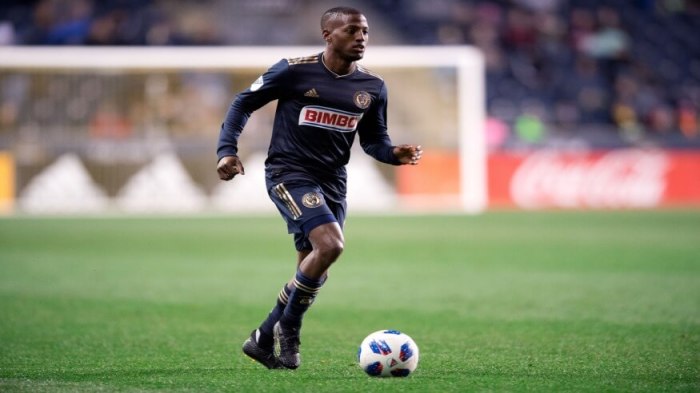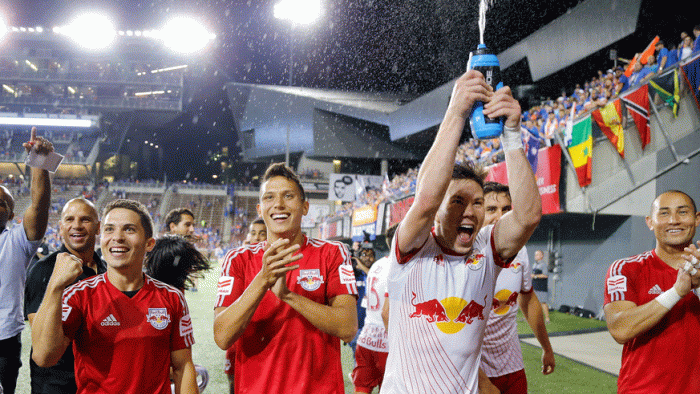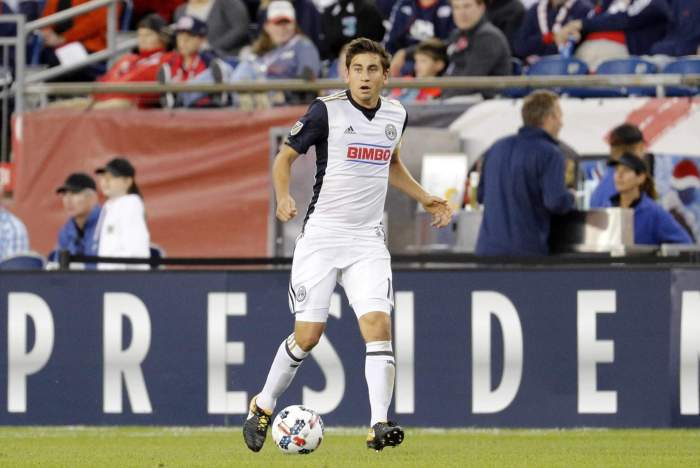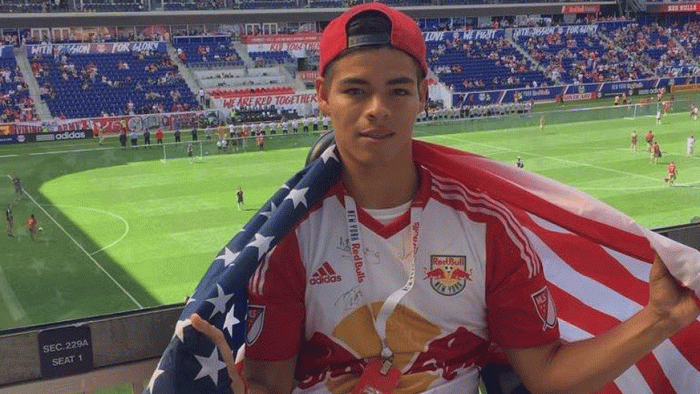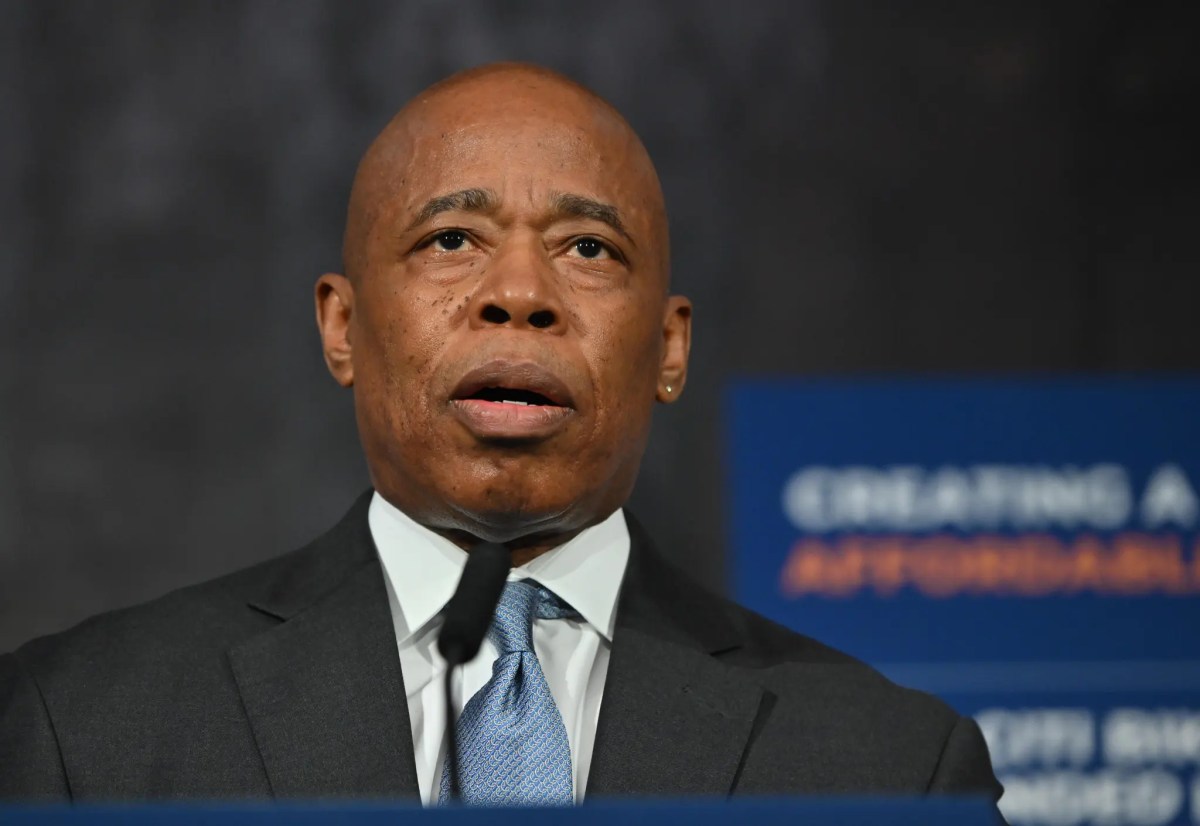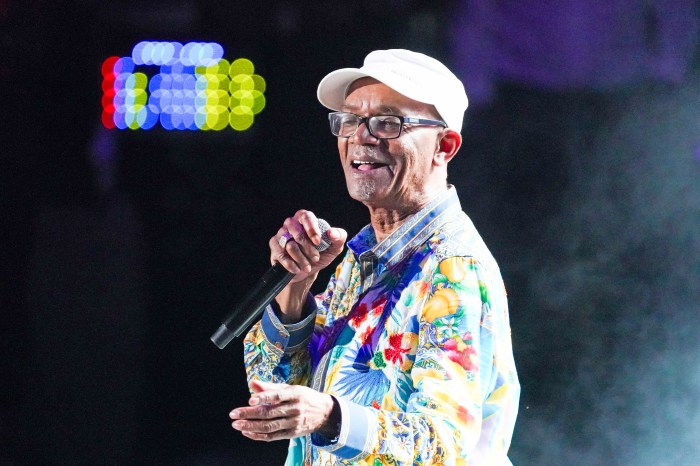Doug Logan is sitting in his office, talking about his adventures from the early days of MLS. He’s looking at a picture from 20 years ago, an image that dates back to the league’sinauguralseason. The nostalgia crackles through the phone line as hedescribesa photo on his wall. It is a photo of Logan, the league’s first ever commissioner, with Alexi Lalas, a United States national team defender who was one of the new league’s brightest stars. He goes into detail about what he is looking at:Lalasis wearing a T-shirt that read “East,”denoting which conference he was suiting-up for in the league’s first All-StarGame. Lalas was sporting his trademark long locks andgoateeback then.Logan is smiling. Lalas and Logan are in the foreground of the picture,a packed Giants Stadium behind them. “Those days” were two decades ago, a generation of fans growing from kicking soccer balls – in what was then an oddity of a sport – into a nation that is very quickly learning to love the world’s game. On Sunday, the league celebrated its 20th MLS Cup, the culminating moment of the season. Logan oversaw the league starting in 1995,16 months before the first match kicked off in San Jose. From there, the league has grown quite a lot. In many ways, it doesn’t look much like the MLS that Logan helped kick start. The league now sits at 21 teams, up from the 10 teams that originally entered the league. There are new team names, three underperforming clubs have contracted, MLS introduced a new logo last year and attendance is steadily going up – as is sponsorship revenue. The league is now attracting superstar players. By every mark, MLS is, in fact, Major League.
But it wasn’t always that way.
In those early days, Logan remembers multiple teams being owned by a single ownership group. Some places like Kansas City, which now routinely sells-out its soccer-specific stadium, struggled to get a couple thousand fans into massive Arrowhead Stadium. Soccer was still a big roll of the dice, a sport that was played by kids and watched by select groupsbut seemed foreign to most sports fans. Despite the struggles of the early days, Logan led an ownership group that was committed to avision. They wanted slow and steady growth.
RELATED: 2016 NFL Mock Draft
“We knew that we were on embarking on a generational project. The project itself would take a generation – or two – for it to gel. Which quite honestly is no different than any other leaguethat represent themselves as agent,”Logan told Metro by phone last week. “The NBA, started in 1946, by 1961 they were doing delayed broadcasts on TV. They were still schlepping back and forth between Rochester and Buffalo.
“We knew that it would have to go through a generation or two of gradual growth. Despite the desire of some in the public and some pundits, there was no instant breakthrough. You don’t just throw the ball on the pitch and have instant success.” He calledhimself “incredibly confident” early on thatsuccess wouldcome. Andby success, he meant that the league would be able to get by until the next year. Then the year after that. Then the year after that. Now, MLS is boldly talking about being a top league in the world within a decade’s time.
The early years saw MLS try to lure the family checkbook to their stadiums as most of the marketing played towards youth players and their parents. But in recent years, the league has clearly gone after a more hardcore audience. Look no further than any MLS advert and supporters group, carrying scarves and banging drums, makingup most of the crowd shots. Those first few years, most ownership groups saw “supporters” as a nuisance. Now in recent years, they’ve embraced their colorful passion. With this new mentality, the league is attracting younger fans and casting a wider net in terms of demographics. Logan said it was a mistake for the league to not embrace the tribal passion of soccer earlier on, insteadfocusing on making the early days of MLS about family entertainment.
“The twopotentialcore audience were what we called ‘New Americans’ which was composed of mainly Hispanics, new to this country. In New York, it was multi-ethnic. But most of the cities we went into it was Latin. We used to have great arguments of where to put our resources. I always thought that putting all our eggs in the family basket or putting most of them there, was misdirected. I used to have fights with some of the members of our board. I was the one who encouraged us to get involved in multi-lingual advertising,” Logan said. “The family side of things,you find no sport with that as a backdrop. Successful sports have interesting metrics with regards to how you measure them. Focusing on people who treat the following of this sport in a tribal way is ultimately how you’re going to be successful. There is tribalism in Seattle, there istribalismin Portland, there is tribalism in Vancouver, there is tribalism in D.C. “ ***
Logan won’t name names but it was in the early days of MLS and one the league’s star players was from Latin America. The star player was supposed to be at a certain event, Logan remembers, but he wasn’t on time ashe “ran afoul of the law because of his roving eyes.” It was well known that this player fancied himself as a ladies man and that he completed a number of passes not just on the field but off of it as well. He showed up late to the league event and the commissioner asked him where he wasandwho he was with.
“He said ‘I was with mycuzin‘,” Logan said.
“Mycuzin– he was trying to say his cousin. She obviously was not. Soccer players, for the most part, are smarter than most athletes. They make better decisions than most athletes. In my career I’ve had occasion to deal with a lot of team sports – but [soccer players] are certainlymischievous.” Those early days, more than three-and-a-half seasons at the start of MLS, were fun days for Logan. The league signed a number of foreign imports, both to help the level of play but also put butts in the seats. He can rattle off the names, major players in global soccer and widely recognizable. But as much as he recalls them dazzling on the field, he remembers them away from the crowds and bright lights:
Roberto Donadoni (Italy) – “You take a guy likeDonadoni, who was a wonderful player and a wonderful human being, who I thought turned out to be a pretty good coach in Italy for awhile. He loved living in New York. It was something that was very special to him. What people don’t know is that he was aconnoisseurof art. he spent all of his time in art galleries and museums. He was a wonderful man.” Carlos Valderrama (Colombia) – “Was a wonderful man and a wonderful player. He and his wife felt relieved to be here over the issues of safety, that he could live [in this country]. I saw him not to long again. But for him it was a joyful experience because they could raise their kids in a safe environment as opposed to where they were in home.” Jorge Campos (Mexico) – “Was just aleprechaun, he was full ofmischief, a lot of fun to be around. How he was on the field is how he was in private. And a great teammate may I add.” Carlos Hermosillo (Mexico) – “Was one of the brightest guys I’ve ever met in an athlete. A really, really bright guy.”
Doctor Khumalo (South Africa) –“I sat down for many hours talking with Doctor Khumalo, talking about South Africa, talking about Apartheid, and how sports were so vital to the country’s rehabilitation.’ ***
There was also the on the field stuff that dominated Logan’s life. Hired in early 1995, he remembers not takinga vacation day until June of the following year.Such was the workload of launching a new league. Sponsors needed to be signed, new franchises kicked off and expansion was already being talked about in the league’s early days. New players were needed, a television deal had to be worked out and owners kept happy. He lived in an airplane, flying here, there andeverywhere.
Logan nowlivesin Florida. His newest passion has nothing to do with sports but is helping the homeless. He is working with the city of Sarasota on a project that will providing housing for the homeless. It isan effort that is needed as the city is facing a homeless crisis. It wasn’t an opportunity that sought him out but one that called him. He has stopped his consulting and being an adjunct professor at NYU to focus his attention on this need to put a roof over the heads of the homeless. It is perhaps his greatest calling.
Yet it was 20 years ago that most people in the world of sports will know Logan. His work helped set in place the growth of a league that is closing in on being a destination for world class talent from across the globe. MLS is now poised for a major step forward because of men like Logan, who as the league’s first commissioner fought to get the league off the ground. And then fought even harder to keep it from plummeting. ***
There was talk in the early days about expanding the league potentially into New York City proper. One of the league’s original teams, the MetroStars, were based in Giants Stadium in New Jersey. While they drew well from Manhattan, much of the following were from north and central Jersey. A New York team might just boost television ratings and attendance. But it was never really a plan to have a team in the five boroughsfrom the start.
“Certainlynot at the inception. Stuart Subotnick, who was a board chairman (also co-owned the MetroStars franchise) – he and I had a wide number of discussions with entities in New York at the time including with NYRA (New York Racing Association) – the tworecetracksin New York at the time. We had discussions with the Yankees, we had discussions with the Mets. We always had interest within the city limits or Long Island,” Logan said. This was, according to Logan, to be “in addition to the MetroStars” and not in place of the franchise. This past year, MLS welcomed New York City FC as an expansion team. They played their home games at Yankee Stadium and have been one of the league’s top drawing teams this year. Logan said that the league “came close” in discussions with Aqueduct or Belmont in terms of using the infield at theracetracksfor a possible soccer stadium.
Despite the glitz and theglamorassociated with the team, Logan was disappointed in the MetroStars in those early days. They had players such as Roberto Donadoniand national stars such as Tony Meola and Tab Ramos. But the organization lacked thewherewithalto win both games and fans. CharlieStillitanowas the team’s first general manager before being replaced by Nick Sakiewicz following a 1999 season where the MetroStars went 7-25. It was Stillitano, now a promoter of international soccer games in the United States, who oversaw the vastly popular World Cup events at the Meadowlands in 1994, two years before MLS started. The MetroStars missed the playoffs two of their first four seasons of play. The New York Red Bulls, the rebranded franchise owned by energy drink Red Bull that bought the MetroStars in 2005, has won the Supporters Shield twice in the past three years. Times have certainly changed. The Red Bullshave made the playoffs in each of the past six seasons.
“We never really got good outcomes in New York, that was always disappointing. That was always disappointing,” Logan said. “We had a general manager who convinced that his owner that they were Milan, you know? That’s the way team was going to be, that’s the way it is going to operate. They didn’t realize that Carlstadt, New Jerseyis not Milan.”
MLS has truly grown into the ‘Major Leagues’ of soccer
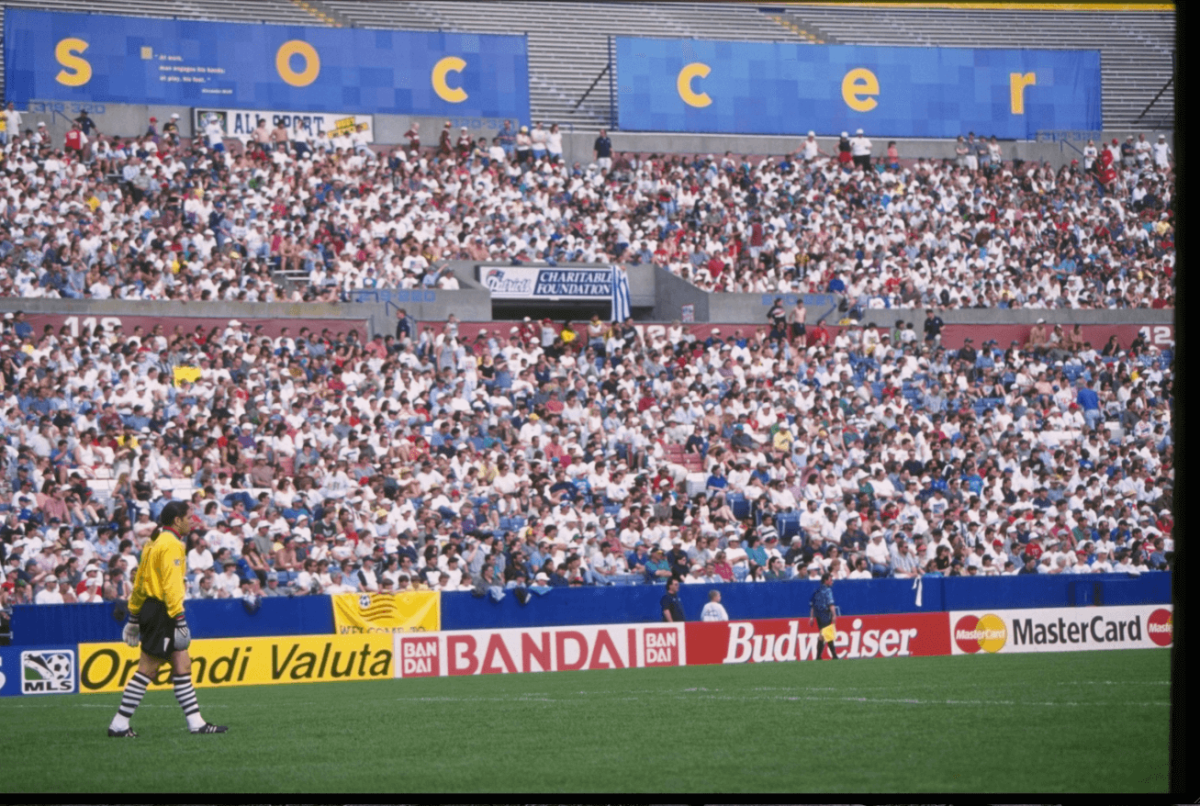
Getty Images

